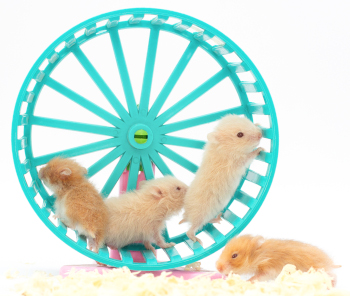Is it a niche… or a rut?

You came up with a brilliant new service a few years back. Your customers liked it, and you promoted the heck out of it. Nobody else was doing it. Well done, you!
And then COVID hit, and all demand for your brilliant niche service dried up.
Now things are looking like they will open up again, and you’re trying to figure out how your service fits in with the “new normal” of increased working from home, far less socializing in nice clothes, and general disruption of old habits (like weekly visits to the dry cleaner). You keep rearranging the ideas in your head of how to jump start your program again.
But maybe it’s time to take a step back and reevaluate it.

What is a niche?
In the world of business, a niche is a gap in goods or services that a business identifies and fills. Your brilliant idea did that. It met a need that customers had — even if the didn’t know they had it until you pointed it out.
The nature of a niche, however, is that once it becomes obvious, others jump on the bandwagon and begin trying to fill it, too. After a while, it’s no longer a niche, it’s just a product or service that anybody can supply. Niches are transitory. They are fleeting. And you should view them that way.
What is a rut?

There are places in western North America where you can still see and walk in the ruts made by hundreds of thousands of wagons that moved across the continent in the 1800s. Somebody found a good route. Other people followed. And the ruts got so deep that it was nearly impossible to jump out of them. Those that remain often are worn right into solid rock.
It is difficult to think of giving up a service that became a winner for you years ago, and jump out of the rut of promoting it long after it is no longer exciting or interesting to your customers. The Law of Inertia, also called Newton’s first law, theorizes that, if a body is at rest or moving at a constant speed in a straight line, it will remain at rest or keep moving in a straight line at constant speed unless it is acted upon by a force.
COVID was a force. Changing demographics are a force. Competition is a force. And thinking beyond the old way of doing things can be a force — one that you are in control of, rather than reacting to it.
Think like a buyer
Before things thoroughly open up again in Canada, now is the time to look at your business with new eyes. One of the most helpful (and often most disturbing) ways is to study your company as if you were thinking of buying it, rather than the one who owns it now. Look at everything.

- Location
- Curb appeal
- Signage
- Equipment (age, condition, value)
- Services offered
- Area demographics
- Profitability
- Staff
- Future potential
- Immediate and long-term threats from outside
- Potential new services/niches/directions
Be brutally honest. If you were an entrepreneur with money to spend and an interest in the business, would you buy your company? If not, why not? The list of things in the NO column are not triggers for depression; they are opportunities. Embrace them and move forward.
Don’t be a hamster

If you’ve ever watched hamsters in a cage, you’ve no doubt seen the great energy the furry little things will expend when they are given a wheel to run in. The speeds they get up to are amazing! There’s just one problem: they’re not getting anywhere.
And when one hamster is really turning that wheel and looking like it could almost take off, another (or more than one) hamster will come along, climb in the wheel with it, and suddenly all they’ve got is a pendulum full of fur that can’t turn in any direction at all.

A niche market is like that. You start out well, others jump on, you lose the edge you had. You have a choice at that point. Keep swinging back and forth with the competition, or get out of the wheel and go find another way to make progress.
Remember, bicycles were a fantastic invention in 1885. But then came cars. And planes. And MagLev super-fast trains. And rockets to the moon.
Every niche has its day.
What’s your next idea?





